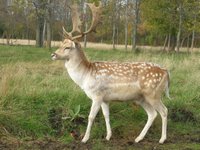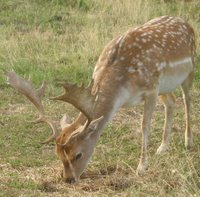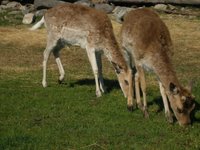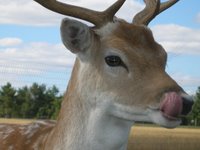
Bash(ful) earned his name due to his behaviour early on. He looks like Buddy but we could always tell which was which because Bash would be miles away from us, skirting the edges of the herd. He rarely even looked in our direction.
This picture taken yesterday shows him in his prime. If you look closely, you'll see that his "maleness" has distended, his neck is thick and dark, his Adam's apple is huge. We've also noticed the slight curl up at the tip of his tail. He is a handsome deer fully prepared for the rut. We haven't got the heart to tell him ...



